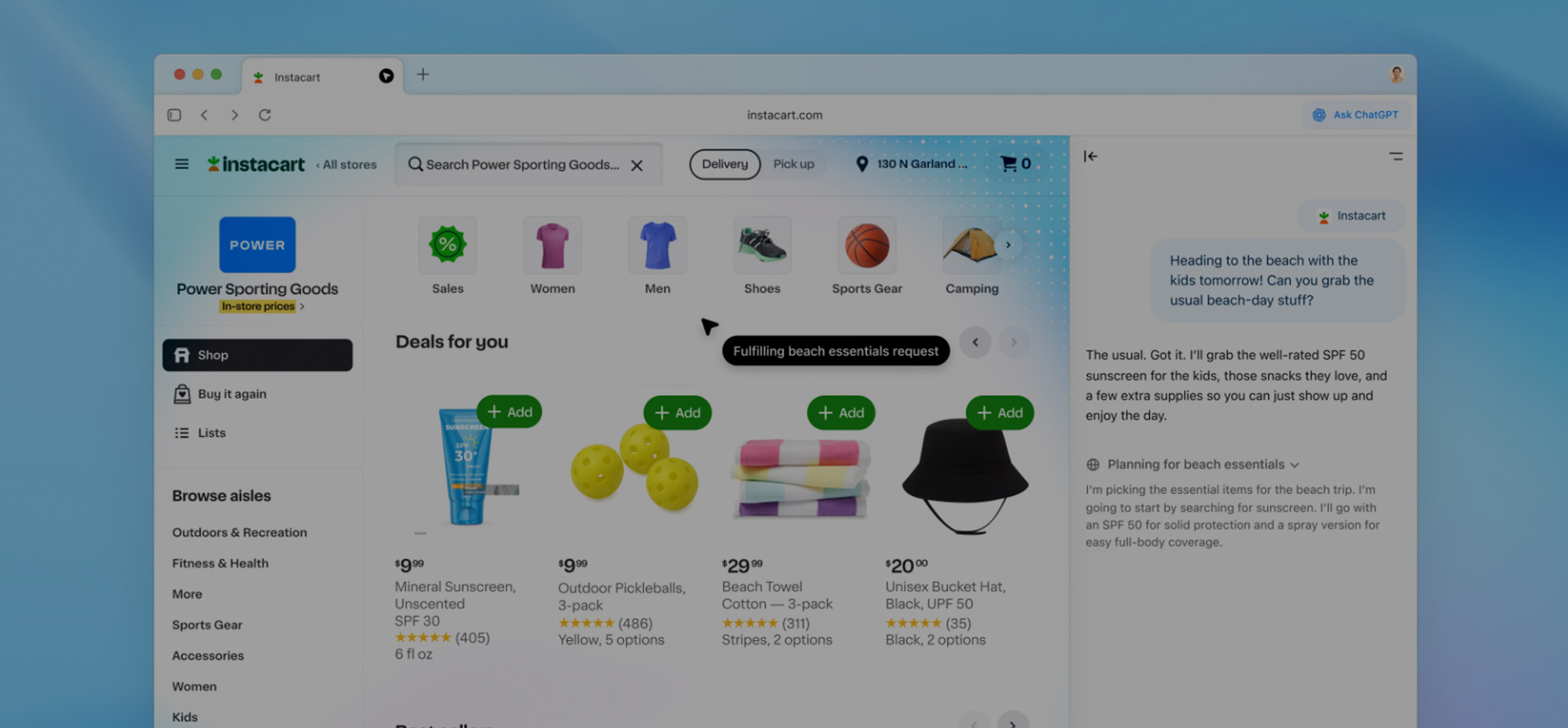A Turning Point for Agentic AI
Every year, AWS uses its summits to preview what’s next. But 2025 felt different. The conversation shifted from what is possible to what is working. From browser-controlling agents to multi-agent orchestration, from vector-native storage to massive Kubernetes clusters, the announcements weren’t experimental. They were production-ready.
For organizations navigating digital transformation, the signal was clear: agentic AI is no longer a research project. It’s becoming a pillar of enterprise architecture. And AWS is betting on being the cloud that powers it—from chips to training, deployment to governance.
Swami Sivasubramanian, leading the Agentic AI team at AWS, opened the keynote with a simple message: agents change everything. This wasn’t just marketing talk. He described them as a “tectonic shift” in how software is built and deployed. Whether it’s reasoning, planning, or adapting to user goals, agents are moving from academic research into production environments.
Companies like Itaú Unibanco, Innovaccer, Box, and Boomi are already putting these agents to work. From automating internal workflows to orchestrating large customer experiences, AWS isn’t just imagining what agents can do—they’re already running them at scale.
Core Announcements That Signal the Next Phase of AWS
Bedrock AgentCore: The New AI Operating Layer
One of the most talked-about launches at the Summit was Amazon Bedrock AgentCore. Framed as an “AI operating layer,” AgentCore integrates seven services—Memory, Identity, Gateway, Code Interpreter, Runtime, Observability, and Browser access.
The goal? Take the messiness out of deploying and managing agents in real business contexts. These services enable organizations to spin up AI agents that respect enterprise boundaries, including session isolation, identity-aware actions, and clear audit trails. It’s a blueprint for running agents securely and scalably. And it makes transitioning from proof of concept to production a whole lot smoother.
Native Vector Storage with S3 Vectors
Another standout was Amazon S3 Vectors. While vector databases are nothing new in the AI world, AWS just made storing and querying them more accessible. With S3 Vectors, developers get native support for vector embeddings inside the S3 buckets they already use.
That might sound like a backend detail, but it’s a big deal. It means sub-second similarity search at cloud scale, with costs that can be 90% lower than those of dedicated vector databases. Paired with Bedrock Knowledge Bases and OpenSearch, this lays a powerful foundation for retrieval-augmented generation (RAG) pipelines.
SageMaker Gets Smarter and More Customizable
Custom models are no longer just for AI labs. With the latest SageMaker updates, AWS is putting advanced fine-tuning capabilities in every builder’s hands. The new Nova recipes support full fine-tuning, parameter-efficient training, and reinforcement learning using PPO or DPO—tailored to Nova Micro, Lite, and Pro models.
But it’s not just about model tweaking. SageMaker now integrates more tightly with business data. It supports QuickSight dashboards out of the box and includes a new capability to process and search unstructured files, such as documents, images, and videos, from Amazon S3. It’s an open invitation to bring proprietary data into the AI loop.
S3 Metadata Upgrades and EKS Scaling
Cloud storage might not grab headlines, but it just got smarter. S3 Inventory now offers metadata visibility across all existing objects, not just new ones. Teams can run SQL queries against Iceberg-managed live tables using Athena—no scripts needed. It’s a small update that can save hours of manual work in compliance, tagging, or cleanup.
Meanwhile, EKS clusters now scale to 100,000 nodes, unlocking the ability to train and run AI workloads that were previously impossible. That’s up to 1.6 million Trainium accelerators or 800K GPUs in one Kubernetes cluster, clearly aimed at large-scale AI teams pushing the limits.
Developer Empowerment and Production-Ready Tools
Kiro and Strands Agents 1.0
Developers weren’t left out. AWS unveiled Kiro, a new IDE for agent-assisted development. Think of it as pair programming but with AI agents that can write tests, refactor code, or generate documentation on the fly.
For those working on multi-agent architectures, Strands Agents 1.0 simplifies orchestration. Previously, building agents that talk to each other required custom engineering. Now, Strands provides reusable orchestration patterns and support for multi-agent protocols out of the box.
Marketplace and Training Initiatives
AWS also launched a new AI Agents and Tools category in the AWS Marketplace, giving organizations an easier way to discover and deploy pre-built agents. It’s part of a broader ecosystem play, inviting partners to publish plug-and-play tools for common workflows.
And for those just starting their journey, the Free Tier has expanded. New users can earn up to $200 in AWS credits through guided actions, such as spinning up an EC2 instance or testing Bedrock. Meanwhile, AWS is pouring resources into training—offering free courses, certification vouchers, and new developer challenges through the AWS AI League, which comes with its own prize pool and game-like format.
Cross-Industry Impact and Customer Momentum
Enterprise AI has always had a translation problem: how do you turn cutting-edge tools into real business value?
AWS tried to answer that with a strong showing of cross-industry demos. In healthcare, for example, Tata Consultancy Services showcased an outpatient management solution powered by Bedrock Agents. In financial services, firms like Epsilon are experimenting with fraud detection models customized on Nova. Media companies used TwelveLabs on Bedrock to index and search video footage—frame by frame, semantically.
These weren’t just slide decks. Many were live, working systems, providing proof that agentic AI is already being deployed in critical industries.
AWS’s Strategic Bet on AI Infrastructure
Beyond products, AWS announced an additional $100M investment in its Generative AI Innovation Center, bringing the total funding to $200M. This initiative connects AWS AI experts with customers looking to build real-world applications—like the NFL or AstraZeneca, who’ve already been through the program.
On the startup front, AWS joined forces with Meta to support developers building on Llama 4. A new grant program gives 30 startups up to $200K in credits and technical support to develop new applications using Meta models hosted on Bedrock.
And for those seeking a hands-on, gamified learning experience, the AWS AI League offers that—complete with challenges, badges, and even a chance to win re:Invent passes and substantial credits.
What the Announcements Reveal
AWS Summit NYC 2025 was more than a series of product announcements. It was a statement about the direction of enterprise AI and the role AWS intends to play in shaping it. The event shifted the conversation toward real-world deployment, infrastructure readiness, and who has the tools to lead this transformation. The era of intelligent systems is no longer ahead of us. It has already begun, and AWS is building the core of it.
For enterprises navigating this new landscape, success hinges on more than just access to tools. It requires thoughtful strategy, seamless execution, and solutions that can scale with the organization. Trew Knowledge brings all of that together. From architecting secure AI workflows to custom WordPress integrations that align with your cloud infrastructure, our team delivers the digital solutions that help organizations thrive in the era of intelligent software. Reach out today to explore how we can help bring your next-generation platform to life.


